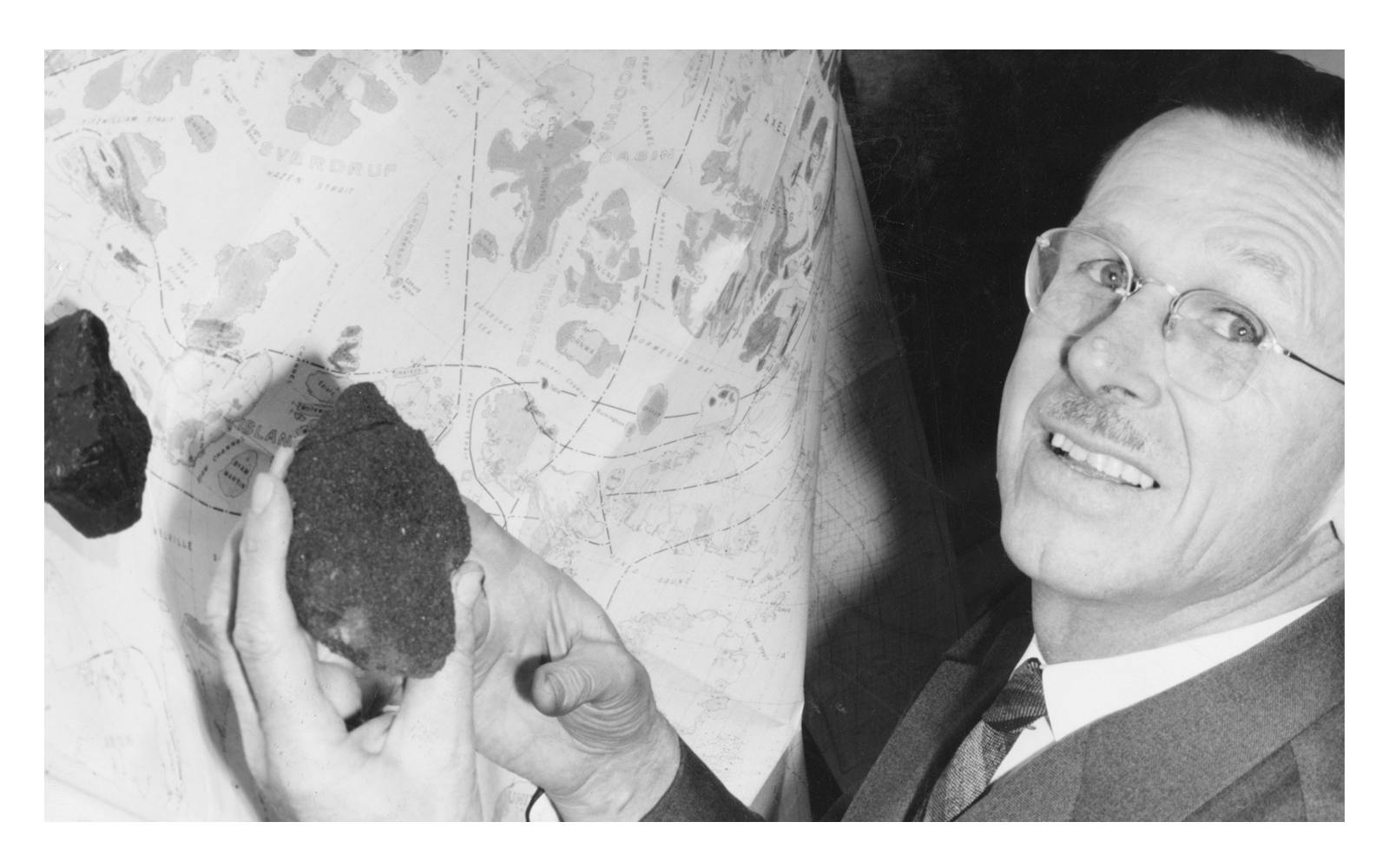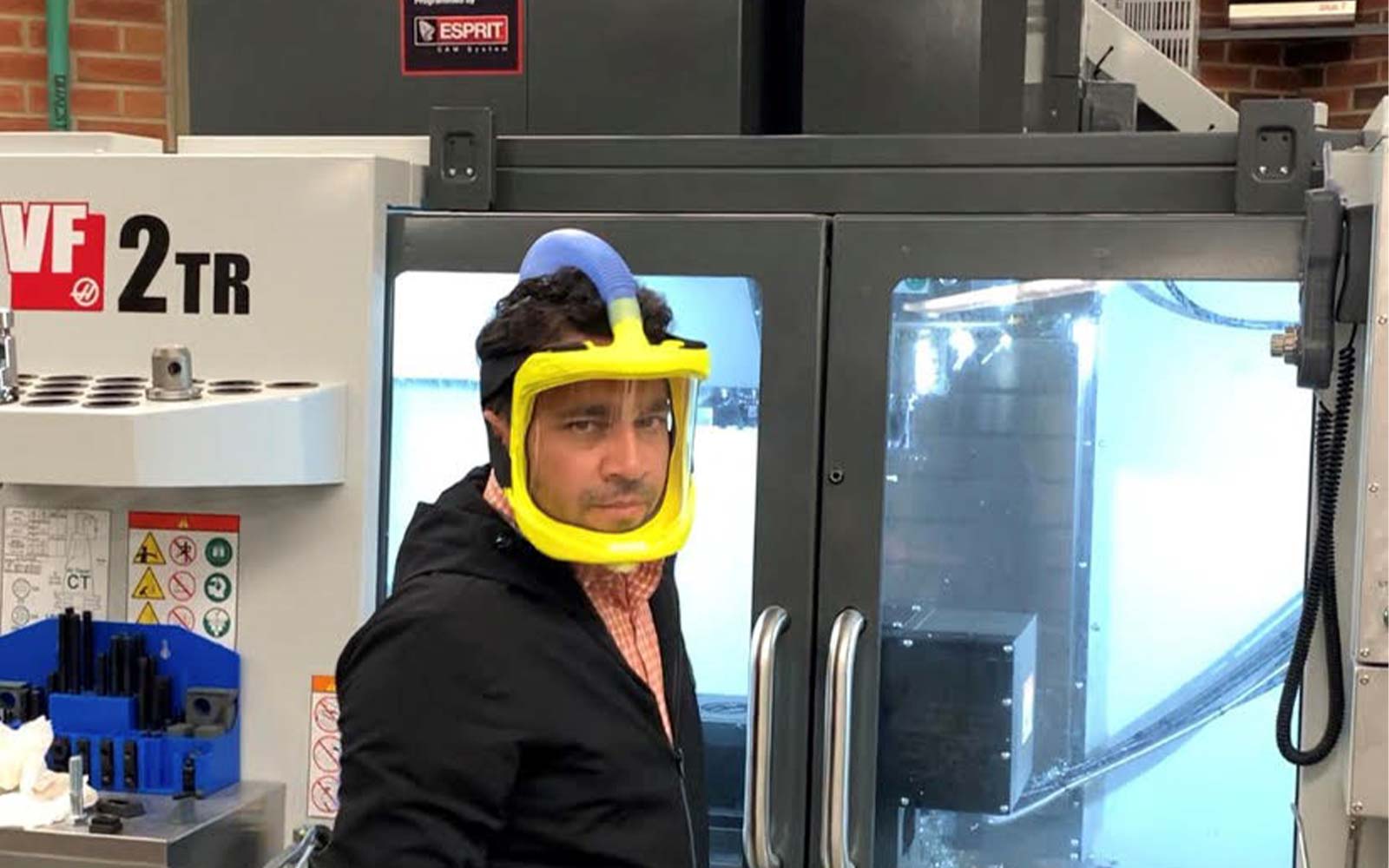Glenbow Archives pa-2807-3566
Here Come the Geoscientists
Professional geologists and professional geophysicists got their own designations in the spring of 1960, ending an era of falling under the umbrella of engineering. Their new titles could be abbreviated P.Geol. and P.Geoph.
By the end of the year, 255 members had been registered or reclassified as P.Geol.s and 24 as P.Geoph.s.
Previously, the practices of geology and geophysics in Alberta were considered a subset of engineering. It had been the case for 40 years, since the creation of the Association of Professional Engineers of Alberta (APEA) and the passing of the original Engineering Professions Act in 1920.
Now, with the passing of the Engineering and Related Professions Act in the Alberta Legislature, that all changed.
But why were geoscientists ever registered as engineers?
When APEA was formed, anyone responsible for work we now consider typical of the geosciences required an engineering licence. The geo work covered by engineering comprised the examination, exploration, and development of rocks and minerals, mineral deposits, and rock structures, along with the application of geology.
Since there was no designated branch for geologists in the Act, geo-practising members were registered under the mining engineering branch.
‘A Move in the Right Direction’
Approval of the new geology and geophysics designations was announced to APEA’s membership in the November 1960 edition of The Alberta Professional Engineer newsletter. APEA was the first association in Canada to officially regulate engineers, geologists, and geophysicists.
“It was a move in the right direction, permitting all members to be proud of their bond with other related professions but at the same time pinpointing the individual’s own distinction,” a former APEA Vice-President, James MacGregor, P.Eng., noted in an opinion article.
He encouraged all members to take pride in their professions by affixing the P.Geol., P.Geoph., and P.Eng. letters to their names—“the hallmark that sets them apart as a member of a trusted profession.”
The new designations were many years in the making. In fact, talk of a separate designation for geologists began soon after APEA’s formation.
At the annual general meeting in March 1927, APEA President Benjamin Thorne pondered the issue in his address to the membership. He noted that a growing number of members were working for petroleum and natural gas development, particularly in the geological line.
“This raises the question of differentiation of qualifications between a mining engineer and a geologist. A mining engineer is not always a geologist, and a geologist is not always a mining engineer,” he said. “It has been suggested that we do something in the way of differentiation; that will be dealt with later.”
In 1953, as the province’s oil and gas industry once again boomed, a committee was formed to review the separate identification of geologists.
APEA’s executive secretary, A.E. McDonald, toured the province that year, meeting with members to update them on the association’s work and gather ideas for improvement. In his travels he met with several prominent Calgary geologists, who suggested to him, as he put it, that “since geology is distinctly different from all other branches of engineering, there would be some justification for a separate designation for geologist.”
Headway was made in 1955, when the Government of Alberta passed An Act to Regulate the Professions of Engineering and Geology in the legislature. It expanded the definition of professional engineering, broadening the scope to clearly include geology.
Discussion continued in 1956, when APEA formed another committee, this time to study separate designations for geologists and geophysicists. The geophysics field that was expanding, thanks to the growth of seismic exploration in Western Canada.
A panel discussion at APEA’s annual meeting in 1957 addressed the subject, posing the question in its title: Should the Engineering Profession Act Provide for Separate Designations for Geologists and Geophysicists?
The answer, in 1960, was yes.
Other milestones have since followed:
- In 1969, APEA’s name was officially changed to the Association of Professional Engineers, Geologists and Geophysicists of Alberta (APEGGA)
- In 2009, members approved a new designation, Professional Geoscientist, or P.Geo. It combined the professional geologist and professional geophysicist designations.
- In 2011, the P.Geo. designation was officially approved in the legislature and APEGGA was renamed APEGA—the Association of Professional Engineers and Geoscientists of Alberta.

The PEGG April 1984
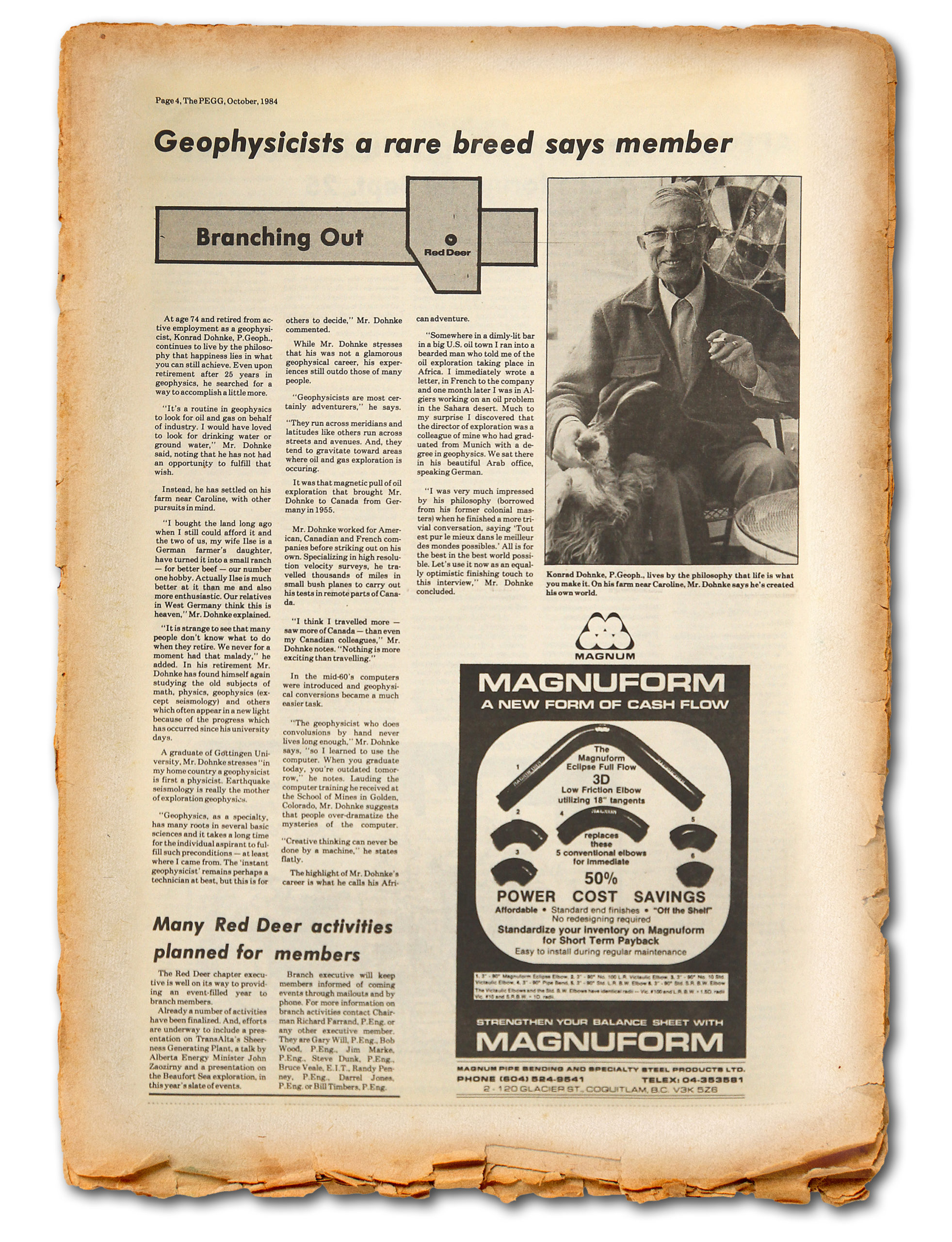
The PEGG October 1984
Dr. John Campbell Sproule, P.Geol., who served as APEA President in 1957, was one of the APEA members who called for the professional geologist designation. He’s shown here in 1963, three years after the P.Geol. designation came into effect.
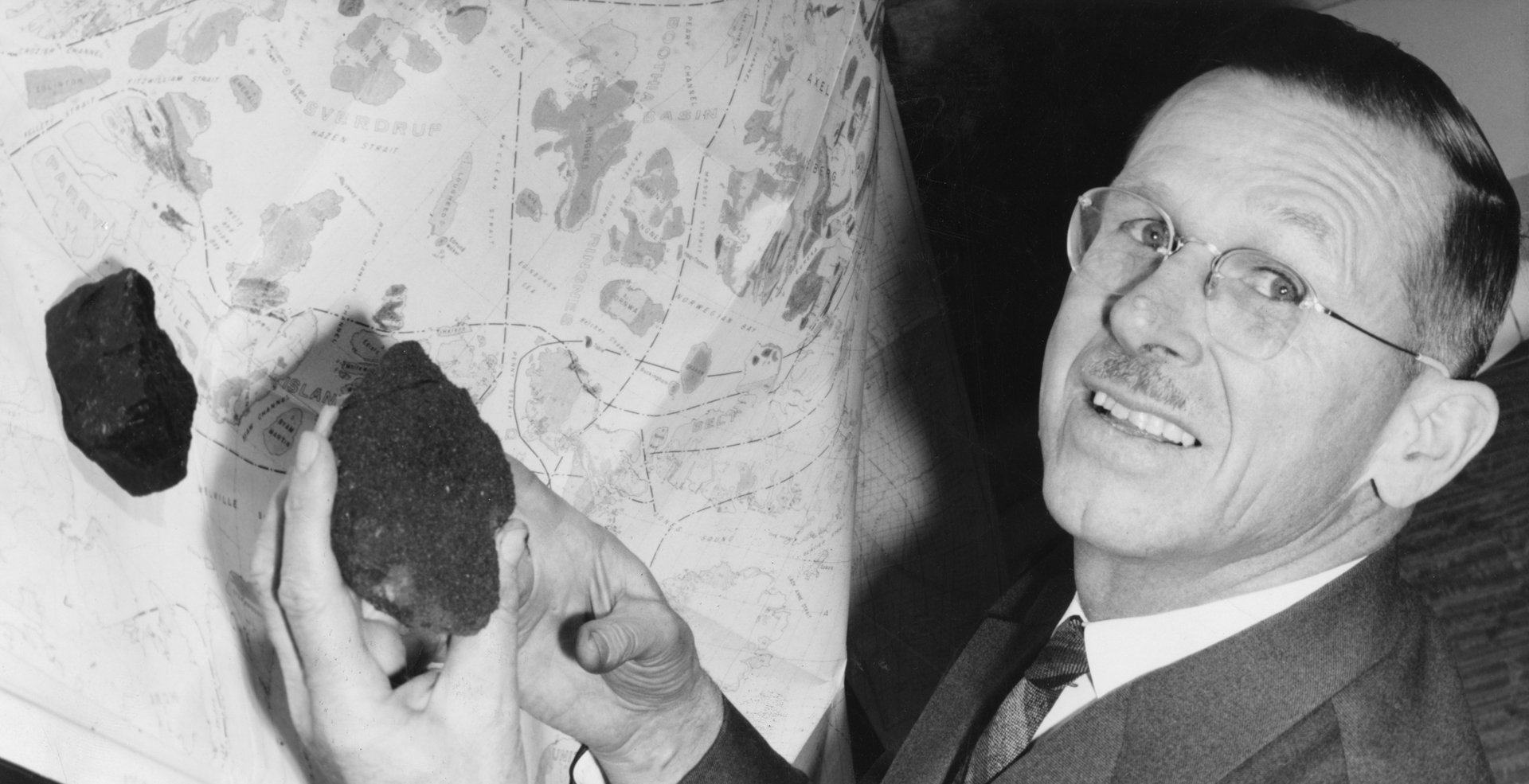
Glenbow Archives pa-2807-3566
Examining core samples at the Mineral Core Research Facility, Alberta Geological Survey, Edmonton
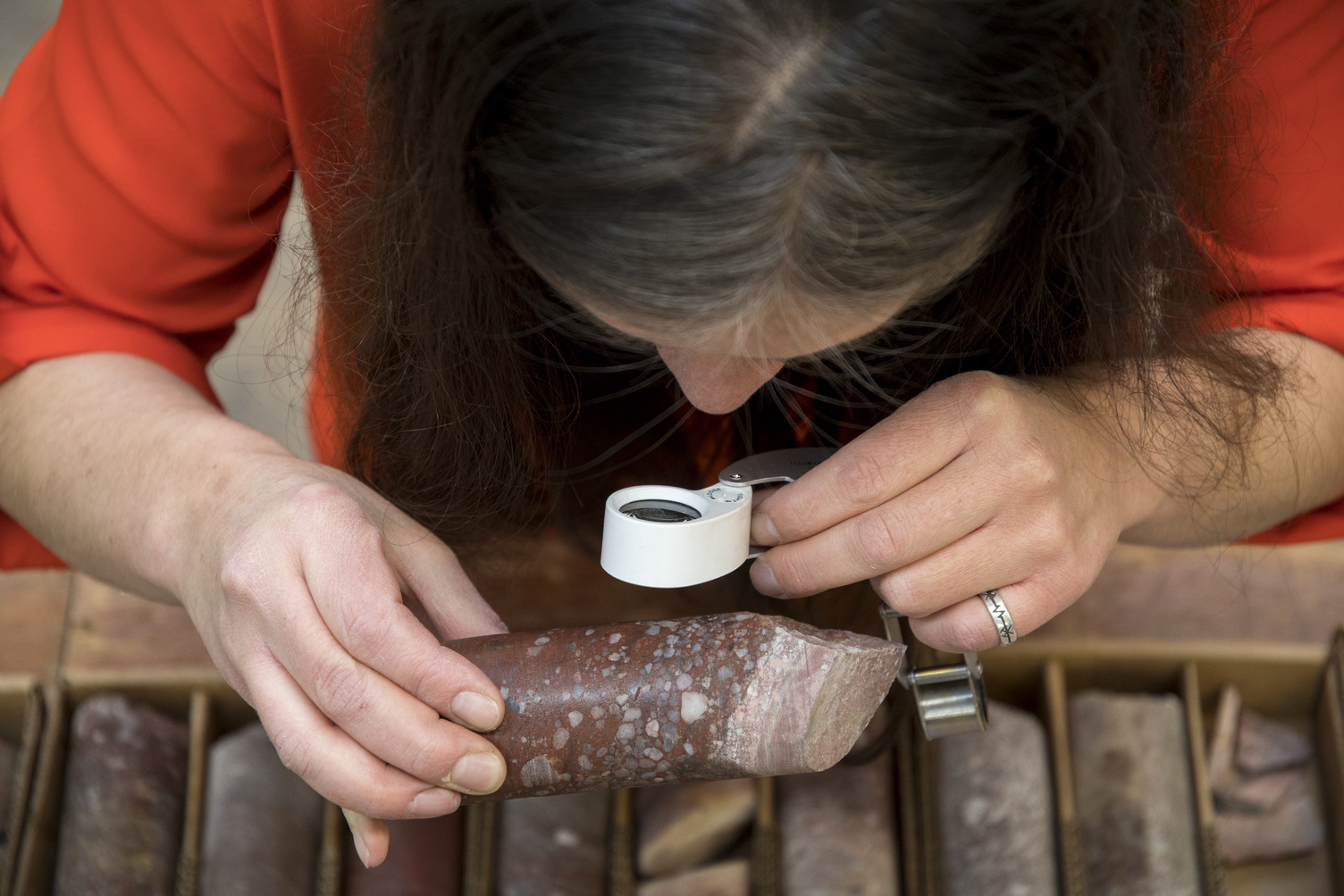
Photo courtesy of APEGA
Geologists Jordan Brinksy, P.Geo. and Gloria Lopex Orrego, P.Geo. examine core samples at the Mineral Core Research Facility, Alberta Geological Survey, Edmonton
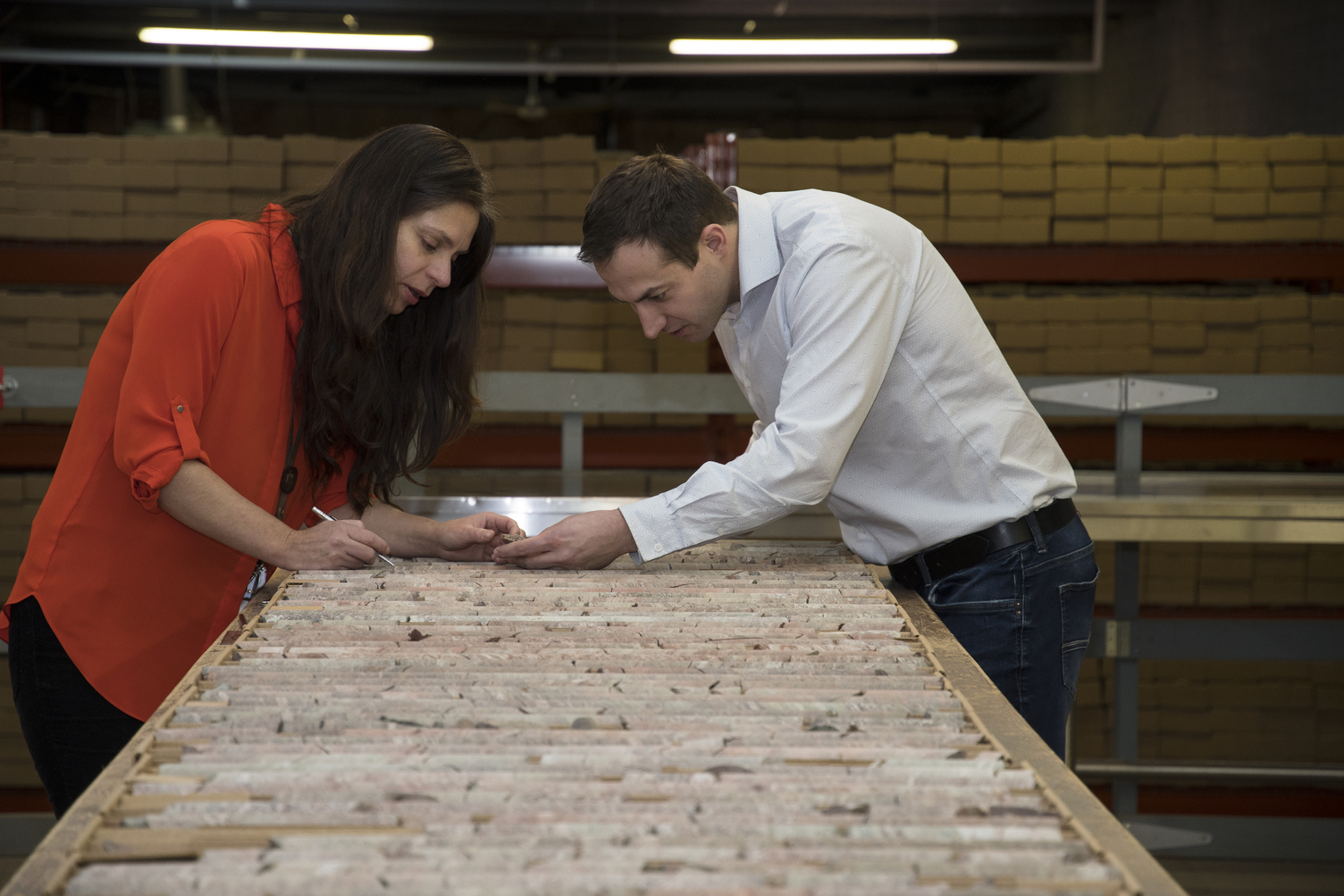
Photo courtesy of APEGA
